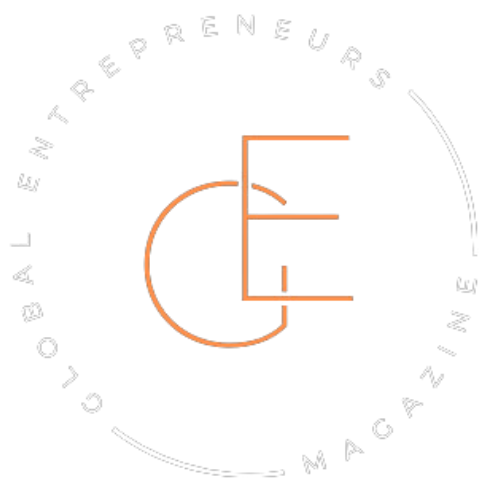It always started the same way. A spark of an idea, scribbled on a napkin or voice-noted in the middle of the night. Something that could work. Maybe even change things. But for too many would-be founders, that’s exactly where it ended — in the margins of a notebook.
Because unless you could write code or afford to pay someone who could, you were stuck. Pitching friends, trying to convince a technical cofounder to join your dream. Getting quoted $50,000 for an MVP that didn’t even exist yet. The message was loud and clear: good ideas aren’t enough.
For years, startup culture quietly favored those with the keys — the coders, the insiders, the well-funded. Everyone else? Wait in line.
But now, the line is shorter. The rules are shifting. And the people who used to be on the outside are finally getting their shot.
The old way: Code or cash — pick one
For a long time, building a startup meant choosing between two paths: learn to code or raise enough money to hire someone who already could. Both were steep hills.
Learning to code sounds romantic until you’re 40 hours deep into tutorials and still staring at a blank screen. On the other hand, hiring developers means finding the money — which most first-time founders simply don’t have. Investors rarely write checks for ideas. They want traction. They want proof.
So ideas sat. People with real insight into real problems couldn’t move forward. They watched as better-connected, better-funded founders shipped products that didn’t solve the problem nearly as well.
It wasn’t just frustrating — it was discouraging. The startup world told non-technical founders to “just find a partner,” as if it were that easy. But partnerships are built on trust. And trust takes time. The early momentum? Often lost in the waiting.
That’s why so many people walked away. Not because their ideas weren’t strong — but because the path to building felt closed.
No-code came quietly, then changed everything
At first, no-code tools felt like toys. Website builders with limited templates. Drag-and-drop editors that couldn’t handle anything more than a blog or portfolio.
But while the tech world looked the other way, something started happening. Those “toys” got smarter. Tools like Webflow, Glide, and Bubble grew more capable. Makers began stitching together real products using Airtable, Zapier, and Notion. And suddenly, people who never wrote a line of code were launching apps, building marketplaces, and selling software.
It didn’t happen with a bang. It crept in through indie hacker forums and startup Twitter threads. One day, the term “non-technical founder” didn’t sound like a disadvantage anymore — it sounded like a category.
Now, the question isn’t “Who’s your developer?” It’s “What did you build it with?”
What first-time founders actually care about
Ask any first-time founder what keeps them up at night, and it’s not lines of code. It’s speed, cost, and control.
Speed, because ideas have a shelf life. Waiting six months for a product to launch means someone else might beat you to it — or you might just lose interest. No-code tools let you test something in a weekend. You can go from idea to live product before Monday hits.
Cost, because bootstrapping isn’t a buzzword — it’s the only option for most new founders. Hiring a dev team can drain your savings before you even know if people want what you’re building. With no-code, $30 a month and some grit gets you further than $30,000 used to.
Control, because founders want to move fast. You shouldn’t need to file a support ticket every time you want to tweak a button or test a new layout. With no-code, you’re in the driver’s seat. You can experiment, break things, fix them, and keep moving.
Ask Jane — a former teacher who built a tutoring platform on Glide without touching a single line of code. She started with a spreadsheet, turned it into a functioning app, and now earns more from her platform than she did in the classroom. That kind of leap used to take a team. Now, it just takes a weekend and the will to try.
From scrappy solo projects to funded startups
What used to be side projects are now showing up in investor pitch decks — and winning.
Take the story of an ex-banker who built a personal finance tool in Bubble. He didn’t have a technical team. Just a problem he’d seen up close and a tool that let him build something real. That scrappy prototype? It caught the eye of a fintech accelerator. Now he’s raised funding and hired a team to scale the product.
Stories like his aren’t rare anymore. No-code founders are proving that what matters isn’t how sleek the backend looks — it’s whether people care enough to use what you’ve built.
Even traditional investors are taking note. They’ve started asking different questions. Not “Who’s on your tech team?” but “How many users signed up last month?”
No-code didn’t just unlock building — it reframed what it means to be ready.
What no-code can’t do (and why that’s okay)

No-code doesn’t make everything easy. And it definitely doesn’t make everything possible.
Some products hit a ceiling. You might outgrow the tool you started with. You might hit performance issues or want a custom feature that just isn’t supported. There are limits — and anyone who’s used no-code for long enough knows that.
But here’s the thing: most first-time founders aren’t trying to build the next billion-dollar infrastructure company on day one. They’re trying to prove that someone cares. They’re trying to show that a problem is real — and that their solution is worth building.
And for that, no-code works just fine.
If anything, those limits force clarity. You build what matters most. You skip the overengineering. You focus on the value — not the stack.
Later, sure, you might bring on developers. You might rebuild from scratch. But now you’ll do it with users, feedback, and a business — not just a hunch.
The playing field isn’t perfectly flat, but it’s flatter than ever
Let’s be honest — not everyone has the same access to time, tools, or tech literacy. Some people still get a head start. Fast internet, free time, financial cushion — these things matter.
But compared to ten years ago? The difference is night and day.
You don’t need to live in Silicon Valley. You don’t need a computer science degree. You don’t need a friend at Y Combinator to make introductions.
You can be a nurse in Manila, a college dropout in Nairobi, a laid-off retail manager in Ohio — and still build something that works. Something people want to use. Something that makes money.
The playing field isn’t level. But for the first time, it’s not completely tilted against the outsiders.
And that shift? It’s just getting started.
The best time to start is when the rules are changing
Every wave creates winners. Not because they had perfect timing or perfect ideas — but because they started when things were still uncertain.
That’s where we are now.
No-code hasn’t figured everything out. Some tools still break. Some workflows still feel clunky. But the doors are open in a way they never were before. And that window — where the early adopters build before the crowd floods in — won’t stay open forever.
So if you’re sitting on an idea, waiting for the right moment, this might be it.
Not because it’s easy.
But because you don’t need anyone’s permission anymore.




